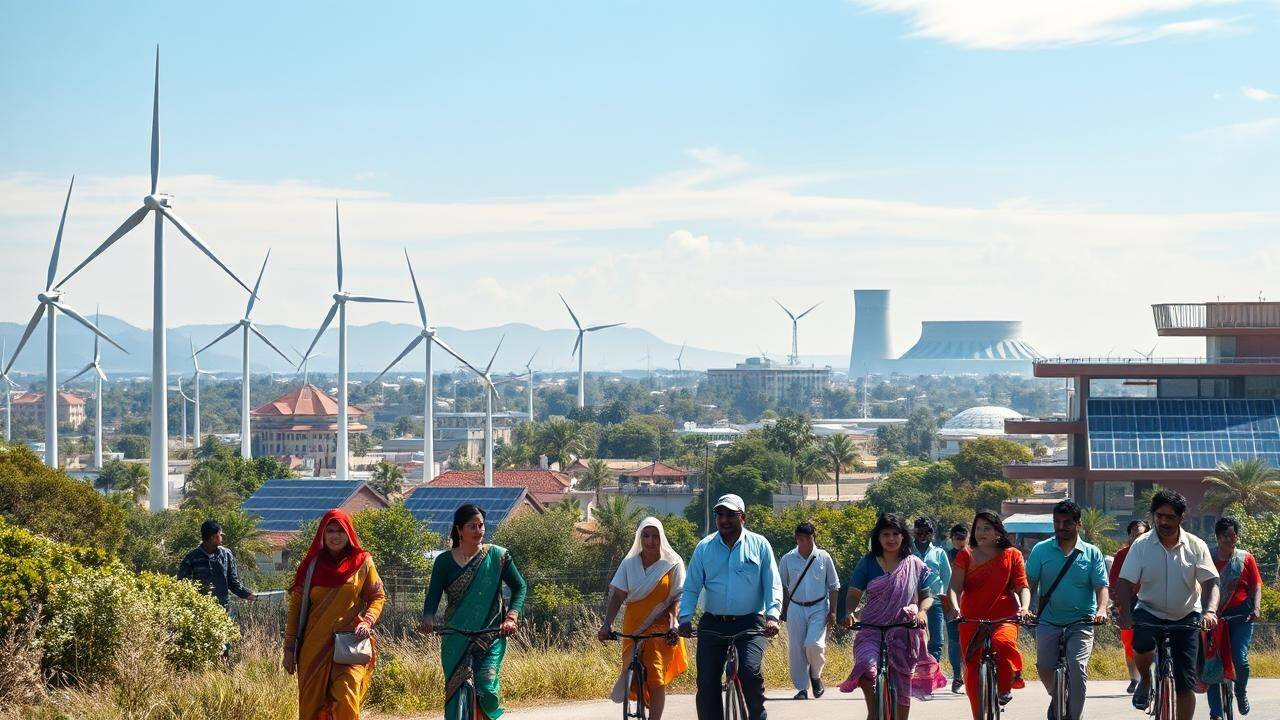Prime Minister Modi unveiled an ambitious plan to achieve energy self-reliance for India, emphasizing nuclear power expansion with ten new reactors and a tenfold capacity increase by 2047. The National Deep Water Exploration Mission will identify offshore oil and gas reserves.
India Charts a Bold Course Towards Energy Independence
For years, India has navigated the complex waters of energy dependence, heavily reliant on imports to fuel its burgeoning economy. But the winds are shifting. Prime Minister Modi recently laid out an ambitious vision for a future where India not only meets its own energy needs, but does so with a focus on sustainability and innovation. This isn’t just about securing resources; it’s about securing India’s future.
The announcement signals a powerful, multi-pronged approach targeting key areas: nuclear power, offshore oil exploration, and a decisive push for reduced import reliance. It’s a bold strategy that acknowledges the urgency of the global energy landscape while prioritizing India’s long-term economic and environmental well-being.
Doubling Down on Nuclear Power
Nuclear energy, often a subject of debate, is emerging as a crucial pillar in India’s energy strategy. The government is actively pursuing the expansion of nuclear power capacity, recognizing its potential to provide a clean, reliable, and scalable energy source. This commitment goes beyond simply building new reactors; it involves fostering technological advancements and building a robust domestic nuclear industry. The aim? To significantly reduce India’s carbon footprint and contribute to global climate goals. It also makes India less vulnerable to the fluctuating prices of imported fossil fuels.

The plan incorporates exploring Small Modular Reactors (SMRs), which offer advantages such as lower upfront costs, enhanced safety features, and greater flexibility in deployment compared to traditional large-scale nuclear plants. SMRs could be a game-changer, allowing for decentralized energy generation and bringing clean power to remote regions.
Unlocking the Potential of Offshore Oil
India’s coastline holds untapped potential, and the government is keen to unlock the vast resources hidden beneath the waves. The renewed focus on offshore oil exploration signals a determined effort to boost domestic production and reduce reliance on imported crude. This involves not only attracting investment and expertise but also employing cutting-edge technologies to ensure responsible and sustainable resource extraction.
Offshore drilling is a complex and challenging endeavor, but with advancements in technology and a strong commitment to environmental safety, India aims to tap into this resource and bolster its energy security. This push for offshore exploration is a crucial element in the strategy to lessen reliance on imported fossil fuels and establish energy independence.
The Path to “Atmanirbhar” in Energy: Reducing Import Dependence
At the heart of this comprehensive strategy lies the overarching goal of “Atmanirbhar” – self-reliance – in the energy sector. This involves a deliberate and sustained effort to reduce India’s dependence on energy imports across the board. The roadmap involves incentivizing domestic production, promoting energy efficiency, and embracing renewable energy sources like solar and wind power. The commitment extends to biofuels, hydrogen, and other alternative energy technologies. Diversification, innovation, and strategic partnerships will be key to navigating the complexities of the global energy market.
This isn’t just about cutting import bills; it’s about building a resilient and sustainable energy ecosystem that empowers India’s economic growth and protects its environment. By reducing dependence on imports, India gains greater control over its energy future, shielding itself from volatile global markets and geopolitical uncertainties. Consider the role of green hydrogen in this future, perhaps discussed in another of our articles about [sustainable fuels](internal-link-to-related-content).
The Road Ahead
Achieving complete energy independence is a marathon, not a sprint. It requires sustained commitment, strategic investments, technological innovation, and a collaborative effort from all stakeholders. The challenges are significant, but the potential rewards – a secure, sustainable, and prosperous energy future for India – are even greater. The vision laid out is ambitious, but it is also essential for India’s continued growth and its role on the global stage. The journey will undoubtedly be complex, requiring adaptability and a willingness to embrace new technologies, but the direction is clear: towards a future powered by India, for India.
Ultimately, Prime Minister Modi’s push for energy independence is a strategic imperative, aligning economic growth with environmental responsibility and national security. This holistic approach, encompassing nuclear, offshore oil, and reduced import reliance, paves the way for a future where India controls its own energy destiny.







